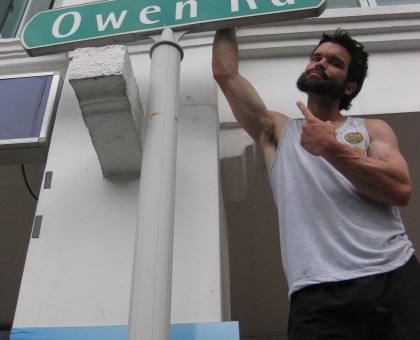.png)
I wish it weren't the case, but I was very underwhelmed with Singapore in 2013.
With such high expectations of a 'pristine,' 'clean' and 'near-perfect' country, I was disappointed when I arrived in Singapore, in what appeared to me to be just another Asian country. Obviously - due to its geographic location and ethnic lineage - it's hard to avoid some aspects of such a culture. There is undoubtedly a first-class feel to Singapore in comparison to other Asian countries, but my expectations were obviously far too high.
Nevertheless, I made the most of my time in Singapore.
Located at the southernmost tip of Malaysia, Singapore is the epitome of a melting pot. A strong western influence is present in what is considered the center of Asia, as more than 39% of the 5.5 million people are expatriates.
That being said, this city-state is definitely not the place for penny-pinching world travellers. Unfortunately, I fit that description to the T. In fact, Singapore is one of the wealthiest nations on the planet, and is the official headquarters to several thousand multinational companies. To register a vehicle to be legally driven on Singapore's roads, the minimum cost - simply to register it - is $100,000SGD ($80,000USD). Drive a Honda Civic? If you do, you likely don't have a spare $100,000 to make it legal, at least in this part of the world.
Staying in Little India, I was within walking distance of Singapore's diverse cultural scene. Boasting arguably the most efficient public transportation system in the world, navigating around the 710 square-kilometer (274 square-mile) island was extremely easy, and I maximized the bus and Mass Rapid Transit (MRT) systems.
Merlion Park, located on the banks of the Singapore River, offers one of the best views of Singapore's most iconic structure: Marina Bay Sands. The world's most expensive building, the Marina Bay Sands ($5.7 billion USD) looks like three rectangular towers holding up a surfboard. This 200-meter (656-foot) building catches the eye of any onlooker, and is especially gorgeous at night. A trip up to the Skypark provides visitors with access to a classy outdoor bar, infinity pool and incredible panoramic views over Singapore. It's quite the evening spot. Within its three towers, the hotel features more than 2,500 rooms.
Delving into some Southeast Asian cuisine, I attended a cooking class at a local Singaporean woman's house. It was a very authentic cultural experience, as she purchased all of the ingredients fresh from local markets. Preparing the four-course meal in her outdoor kitchen - amongst other guests from all over the world - had a warm, cozy feel to it. Even though I was the cook, the meal turned out really well, and the entire process was quite a rewarding and educational experience.
A visit to the Sri Mariamman, Singapore's oldest Hindu temple, proved to be interesting. Located in the Chinatown district, the temple's 'gopuram' (entrance tower) tapers up towards to a moulded ornamental ridge. The scale of each tier and its sculptures is slightly smaller than that of the tier immediately below it. This helps to create the illusion of height and adds to the symbolic importance of the building. On both sides of the entrance are detailed, plaster sculptures, which are painted in a variety of bright colors, and are especially attractive at nighttime.
Singapore is known around the world for its shopping. Although Orchard Road is the upscale, Rodeo Drive of Southeast Asia, I decided to stick to Singapore's less expensive shopping districts. One of those was Bugis Street, which is known as the 'biggest street shopping location in Singapore'. Everything was on offer, including inexpensive food hand-prepared by vendors - from incredible crepes to delicious fresh fruit juices - and any type of clothing, tourist item or trinket one would want.
But this part of Singapore hasn't always been so inviting…to everyone.
From the 1950s until the 1980s, Bugis Street was known around the world for its nightly gathering of transgender people, a phenomenon which that made it one of Singapore's top tourist destinations at that time. In the mid-1980s, Bugis Street underwent major urban redevelopment into a retail complex of modern shopping malls, restaurants and nightspots mixed with regulated back-alley roadside vendors. This reformation saw the end of a colourful and unique era in Singapore's history, but the change helped improve Singapore's international image as it began to be globally recognized.
Venture south off of mainland Singapore, and you will discover Sentosa Island. Sentosa can be accessed a multitude of ways, including cable car (offering unique aerial views of Sentosa), MRT or on foot. Featuring a 2-kilometer (1.2-mile) long sheltered beach, two golf courses and the Universal Studios Singapore theme park, Sentosa is full of entertainment for young and old.













